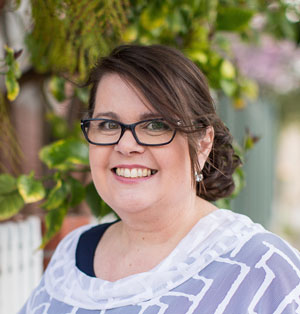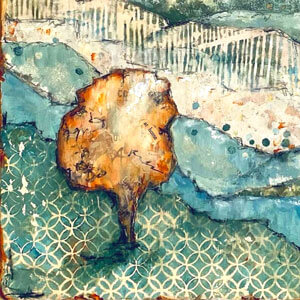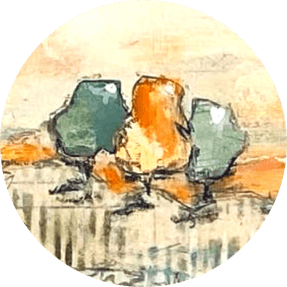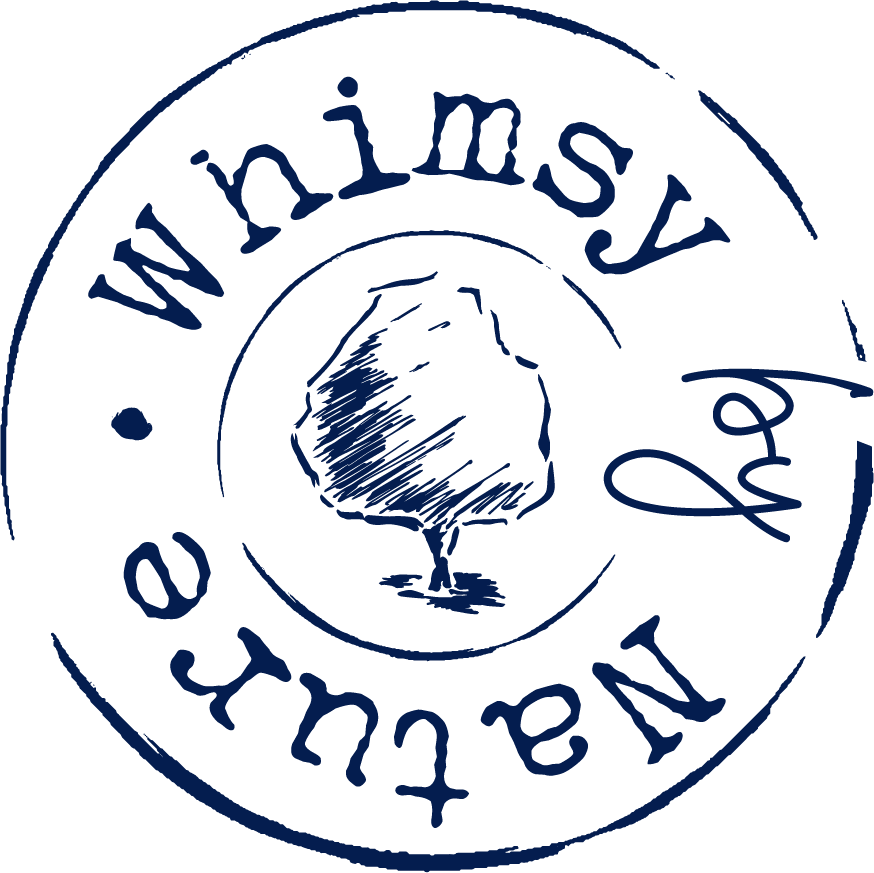
Acrylic Painting
Acrylics are my paint of choice, as they are so user-friendly. They are quick to dry (unlike oils) and they dry permanent (unlike watercolour), making them ideal for mixed media layers.
- 2 x Inexpensive Sketchbook, one for ideas and notes, the other for colour swatching
- Art journal for art journaling, approx. 200 gsm is optimal
- Tracing paper
- White Gesso
- Inexpensive pack of about a dozen mixed paintbrushes, I prefer flat and filbert
- Inexpensive palette knife, I prefer a diamond shape
- Baby wipes or damp cloth (to erase wet paint)
- Rag (to wipe wet brushes)
- Paint palette such as tempered glass or recycled plastic lids
- Light grade piece of sandpaper
- Recycled jars for water
- Spray bottle for water misting
- Makeup sponges – if using or making own stencils
- White chalk – if painting on canvas
- HB, B, 2B & 6B lead pencils and eraser
- Masking tape
- Substrate to paint on – nearly anything will do however I prefer wood panels
- Liquitex Matte Varnish or if using smudgable layers, Golden Archival Aerosol Varnish MSA Matte or Helmar Crystal Kote Varnish Spray Matte
Either purchase a small range of your favourite colours. Jo Sonja is excellent for lightfast quality at a value price, or if you wish to mix your own:
- 1 x 60ml tube Titanium White – fluid or flow consistency (not high flow)
- 1 x 60ml tube Titanium White – heavy body consistency
- 1 x 60ml turquoise
- 1 x 60ml cool blue
- 1 x 60ml warm blue
- 1 x 60 ml cool yellow
- 1 x 60 ml warm yellow
- 1 x 60 ml warm red
- 1 x 60 ml magenta
- 1 x 60 ml pthalo green blue shade
- 1 x 60 ml brown
- 1 x 60 ml unbleached titanium
- I hybrid by having some pre-mixed colours I use from the tube for convenience, and also mix my own to give my paintings more depth.
Matisse Surface Tension Breaker – I use as an alternative to water when painting, as it allows thinning of heavy body paints without losing viscosity (paint quality).
Gamblin Cold Wax Medium – to stop pages sticking together in an art journal








